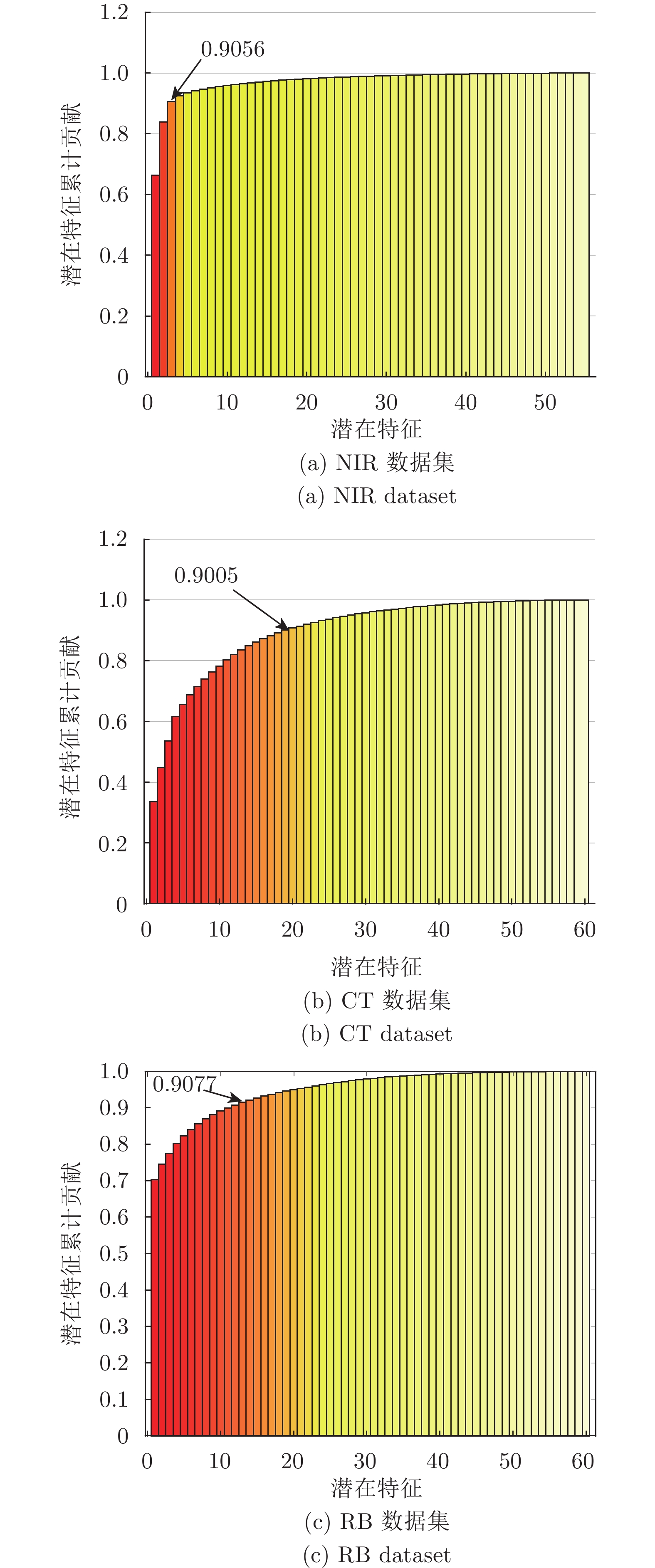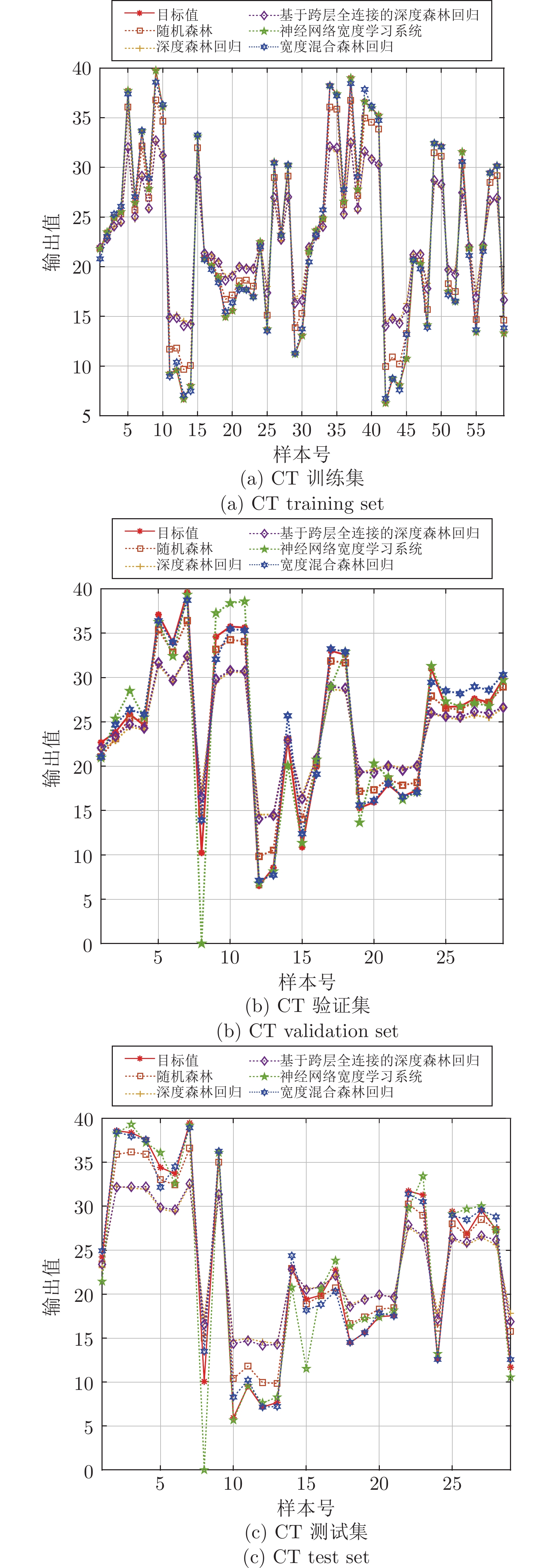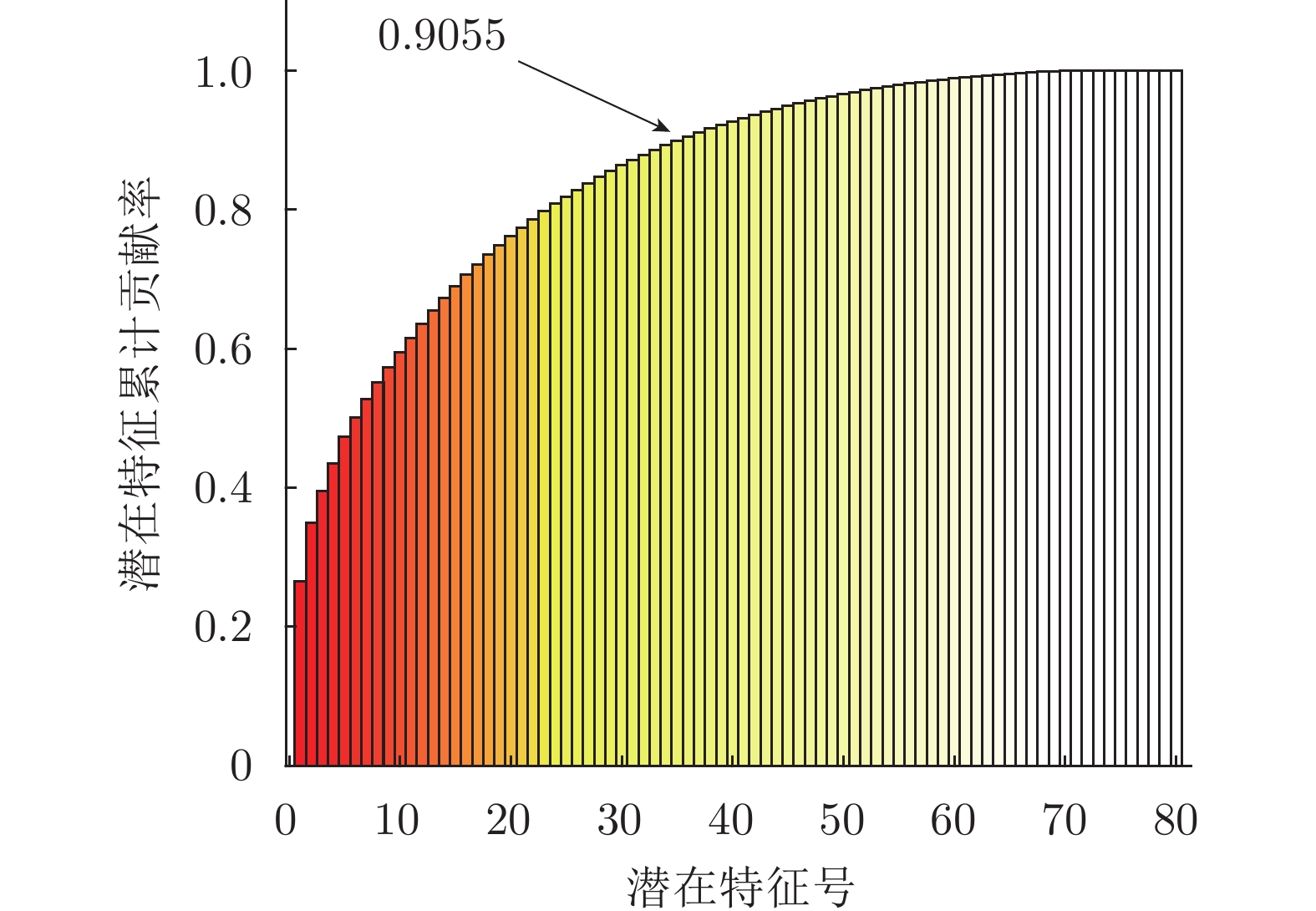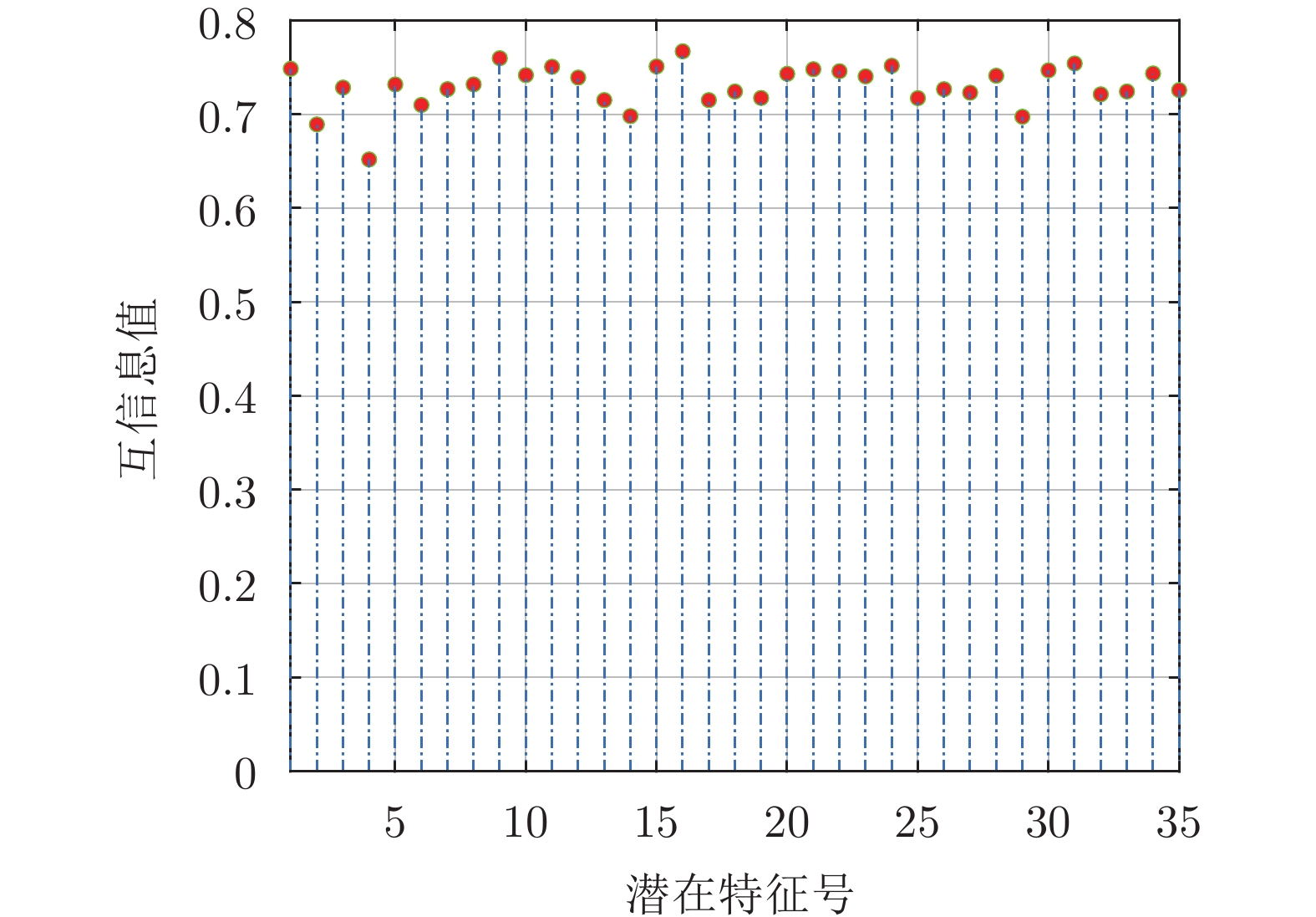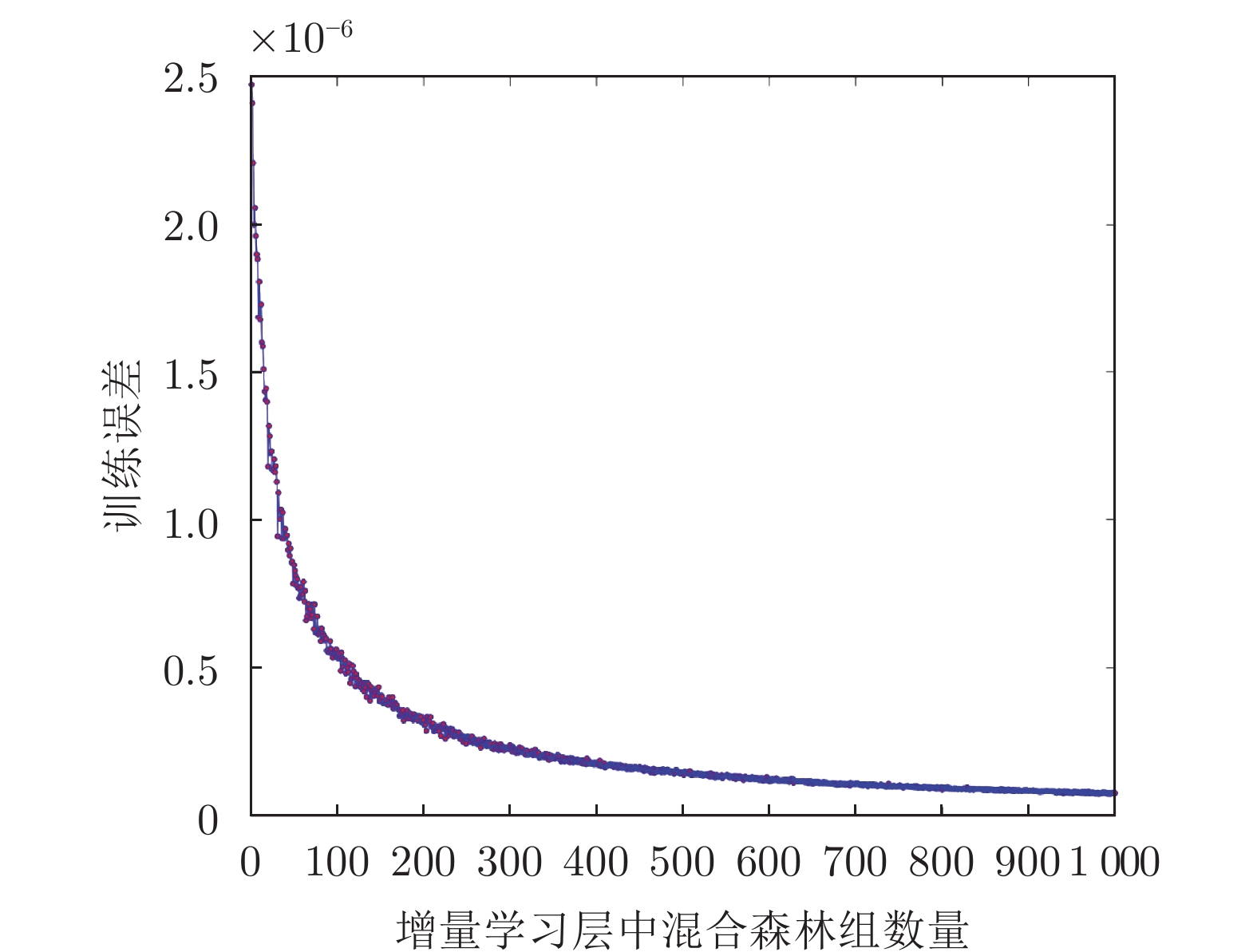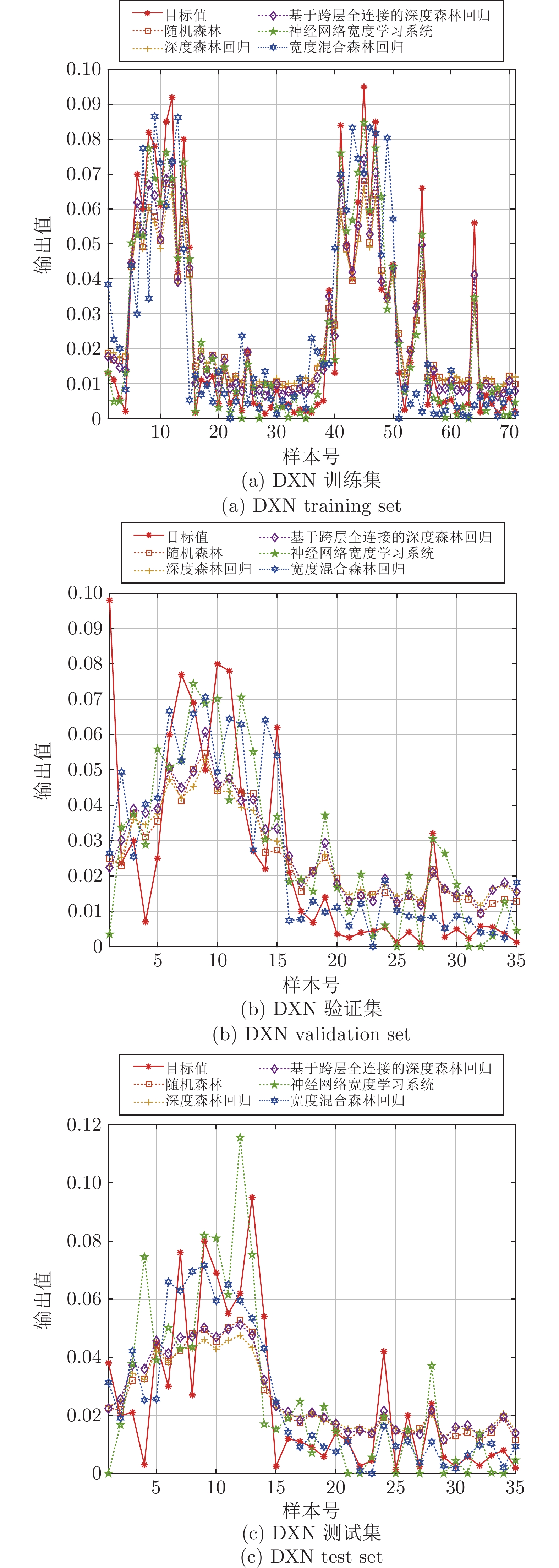Soft Sensing Method of Dioxin Emission in Municipal Solid Waste Incineration Process Based on Broad Hybrid Forest Regression
-
摘要: 二噁英是城市固废焚烧过程排放的痕量有机污染物. 受限于相关技术的复杂度和高成本, 二噁英排放浓度检测的大时滞已成为制约城市固废焚烧过程优化控制的关键因素之一. 虽然具有低成本、快响应、高精度等特点的数据驱动软测量模型能够有效解决上述问题, 但二噁英建模方法必须要契合数据的小样本、高维度特性. 对此, 提出了由特征映射层、潜在特征提取层、特征增强层和增量学习层组成的宽度混合森林回归软测量方法. 首先, 构建由随机森林和完全随机森林构成的混合森林组进行高维特征映射; 其次, 依据贡献率对全联接混合矩阵进行潜在特征提取, 采用信息度量准则保证潜在有价值信息的最大化传递和最小化冗余, 降低模型的复杂度和计算消耗; 然后, 基于所提取潜在信息训练特征增强层以增强特征表征能力; 最后, 通过增量式学习策略构建增量学习层后采用Moore-Penrose伪逆获得权重矩阵. 在基准数据集和城市固废焚烧过程二噁英数据集上的实验结果表明了方法的有效性和优越性.Abstract: Dioxin is a trace organic pollutant emitted from municipal solid waste incineration process. Limited by the complexity and high cost of relative technology, the big time delay of dioxin emission concentration detection has become one of the key factors restricting the optimize control of municipal solid waste incineration process. Although the data-driven soft sensing model with the characteristics of low cost, fast response and high precision can effectively solve the above problems, the dioxin modeling method must fit the small sample and high-dimensional characteristics of the modeling data. In this paper, a broad hybrid forest regression soft sensing method is proposed, which consists of feature mapping layer, latent feature extraction layer, feature enhancement layer and incremental learning layer. Firstly, a hybrid forest group composed of random forest and completely random forest is constructed for high-dimensional feature mapping. Secondly, the latent features extraction of the fully connected mixed matrix is carried out according to the contribution rate, and the information measurement criterion is used to ensure the maximum transmission and minimize redundancy of potential valuable information. Thus, the model complexity and computational consumption are reduced. Then, the feature enhancement layer is trained based on the extracted potential information to enhance the feature representation ability. Finally, the incremental learning layer is constructed by using incremental learning strategy, and the weight matrix is obtained by using the Moore-Penrose pseudo inverse. The experimental results on high-dimensional benchmark and dioxin datasets of municipal solid waste incineration process show the effectiveness and superiority of the proposed method.
-
随着计算机技术、自动化技术、网络技术的迅猛发展, 现代生产过程的自动控制水平不断提高, 使得进行过程监视与故障诊断, 提升过程的安全性与可靠性, 保证过程稳定与产品的质量成为可能.生产过程发生故障轻则造成产品质量不合格、资源浪费等后果, 重则引起火灾、爆炸等危害人员安全和影响社会安定的恶性事件[1].实际工业生产过程中, 生产负荷、产品特性、原料组分等因素的改变会导致生产工况发生变化, 产生多工况过程.多工况过程的数据具有非高斯、非线性、多模态、中心漂移等特征, 各工况中心不同, 其变量至少有一个是多峰分布, 因此多工况过程的故障检测技术更加复杂且对于保证过程稳定与安全具有重要意义.
针对多工况过程, 常用的两种研究方法[2]为:多模型法和全局模型法.多模型法利用各工况数据建立多个局部模型, 通过多次建模将局部单工况过程扩展成为多工况过程.该方法首要问题即为如何将数据分离成不同子集对应的多个工况.如许仙珍等[3]对传统主成分分析(Principle component analysis, PCA)不能有效解决多工况问题的缺点进行了改进, 提出了一种基于PCA混合模型的多工况过程故障监测方法, 该方法的优点在于能自动获取工况数目, 无需过程先验知识.熊伟丽等[4]针对不同稳态工况之间的过渡过程提出了一种基于多工况识别的过程监测方法, 利用独立主成分分析(Independent component analysis, ICA)和PCA提取各阶段数据的信息. Ge等[5]针对多工况间歇过程提出了一种新的基于贝叶斯推理的过程监测方法, 该方法采用ICA-PCA提取数据特征, 利用支持向量数据描述(Support vector data description, SVDD)方法进行故障检测, 构造超球体, 以超球体的半径作为控制限. Zhao等[6]提出了一种能够同时解决多工况多阶段问题的故障监视方法.孙贤昌等[7]提出了一种基于高斯混合模型(Gaussian mixture models, GMM)的多工况过程故障诊断方法, 该方法使用GMM方法对数据进行聚类分析, 得到工况数和不同工况的分布参数, 而后采用PCA方法建模进行故障检测.多模型法的优点在于步骤分明、监控结果易于解释, 故障识别和诊断相对容易, 但在实际应用中存在依赖过程知识、在线识别工况、模型集优化和模型切换策略等问题.
全局模型法直接从具有多工况特性的历史数据中学习全局模型, 构建表征各工况特性的统一检测指标, 可以避免多模型法存在的问题.郭红杰等[8]提出了一种基于局部近邻标准化策略的故障检测方法, 该方法运用局部近邻标准化策略对数据进行预处理, 消除数据的多工况特性.王国柱等[9]提出了一种加权KNN (K-nearest neighbor, KNN)重构的故障诊断方法, 文中采用KNN规则进行故障检测, 基于KNN的故障检测方法是以距离为衡量, 将数据的非高斯、非线性、多工况的特点随着建模数据直接包含在所建的模型中. Ge等[10]将SVDD方法应用于多工况过程, 通过在特征空间构造一个最小超球体将故障数据与正常数据区分.钟娜等[11]提出了一种基于局部熵成分分析(Local entropy component analysis, LECA)的故障检测方法, 通过KNN-Parzen窗方法估计变量的局部概率密度, 利用信息熵理论挖掘局部信息熵, 最后采用ICA方法建模进行故障检测.针对多模态问题, Ning等[12]提出了基于标签一致性字典学习算法(Label consistent dictionary learning, LCDL)和稀疏贡献图的过程故障诊断方法, 该方法通过标签一致性K-SVD方法从正常历史数据中得到字典, 加入一个单位矩阵扩展字典, 运用扩展字典对检测样本进行稀疏编码, 最后以重构误差作为统计量进行在线监控, 该方法对字典进行扩展, 增加了数据的复杂度和计算量, 而且以重构误差作为统计量的误报率偏高.
本文针对多工况过程, 提出一种在稀疏残差空间构建$k$近邻距离统计量的故障检测方法.将多工况正常数据混合在一起标准化用于建立全局模型, 避免工况识别的工作; 采用稀疏编码方法提取分布散、特征不够集中的多工况数据的字典和稀疏编码, 保持工况特征的同时突出数据特征; 采用多工况正常数据的近似值和原始值的偏差构建新的样本空间-稀}疏残差空间, 提出在稀疏残差空间引入距离统计量作为故障检测指标, 通过稀疏残差空间数据间$k$近邻距离大小衡量数据的相似性, 兼得$k$近邻算法解决非高斯、非线性、多工况问题的优点, 改善多工况过程故障检测效果.
1. 基于稀疏残差距离的故障检测方法
1.1 稀疏残差距离(SRD)的构建
本文提出在稀疏残差空间引入距离统计量, 简称SRD (Sparse residual distance), 具体构建内容如下:
定义多工况正常数据矩阵$X\in {\bf R}^{n\times m}$, 其中$n$是变量个数, $m$是样本个数, 使用式(1)所示$Z$-score方法对矩阵$X$进行标准化处理, 得到均值为0, 方差为1的矩阵$X'\in {\bf R}^{n\times m}$;
$ \begin{align} x_{ij}'=\frac{x_{ij}-{\rm mean}(\pmb x_{j})}{{\rm std}(\pmb x_{j})} \end{align} $
(1) 其中, $x_{ij}$是矩阵$X$第$i$行、第$j$列的数值, ${\rm mean}(\pmb x_{j})$是矩阵$X$第$j$列的均值, ${\rm std}(\pmb x_{j})$为矩阵$X$第$j$列的方差, $x_{ij}'$为标准化后矩阵$X'$第$i$行、第$j$列的数值.
设置初始字典$Dic_{0}\in X'_{n\times m_{1}}(m_{1}<m)$和初始训练数据$X_{\rm tr}\in X'_{n\times m_{2}}(m_{2}<m)$, 使用正交匹配追踪(Orthogonal matching pursuit, OMP)算法[13]计算初始训练数据对应的稀疏编码[14]:
$ \begin{array}{l} \mathop {\min }\limits_{{\mathit{\boldsymbol{a}}_\mathit{f}}} \parallel \mathit{\boldsymbol{x}}_{^{{\rm{tr}}}}^j - Di{c_0}{\mathit{\boldsymbol{a}}_j}\parallel _2^2\\ {\rm{s}}.{\rm{t}}.\parallel {\mathit{\boldsymbol{a}}_j}{\parallel _0} \le s,j = 1,2, \ldots ,{m_2} \end{array} $
(2) 其中, ${\pmb x}_{\rm tr}^j\in {\bf R}^{m_{2}}$表示$X_{\rm tr}$的第$j$个样本, ${\pmb a}_{j}\in {\bf R}^{m_{2}}$表示与第$j$个样本对应的稀疏编码, $s$表示稀疏编码的稀疏级别上限.计算更新字典原子${\pmb d}_{k}$, $k=1, 2, \cdots, m_{2}$的误差矩阵$E_{k}$:
$ \begin{align} \|X_{\rm tr}-&Dic_{0}A\|_{\rm F}^{2}=\|X_{\rm tr}-\sum\limits_{j=1}^{m_{2}}{\pmb d}_{j} {\pmb A}_{j}\|_{\rm F}^{2}=\notag\\ &\|(X_{\rm tr}-\sum\limits_{j\neq k}{\pmb d}_{j}{\pmb A}_{j})-{\pmb d}_{j} {\pmb A}_{j}\|_{\rm F}^{2}=\notag\\ &\|E_{k}-{\pmb d}_{k}{\pmb a}_{k}\|_{\rm F}^{2} \end{align} $
(3) 为了确保得到稀疏编码的准确性, 只更新${\pmb d}_{k}$起作用的稀疏编码, 因此定义非零项索引集$\omega_{k}=\{j|1\leq j\leq m_{2}, X_{k}(j)\neq 0\}$和矩阵$\Omega_{k}\in {\bf R}^{m_{2}\times |\omega_{k}|}$, 其中$\Omega_{k}$在$(\omega_{k}(j), j)$处为1, 其余为0.重新计算$E_{k}^R=E_{k}\Omega_{k}$, 对$E_{k}^R$进行SVD分解, 即$E_{k}^R=U\Delta V^{\rm T}$, 更新字典原子$\tilde{{\pmb d}}_{k}$为$U$的第一列, 更新相应的稀疏编码${\pmb A}_{k}^R$为$V$的第一列乘以$\Delta(1, 1)$.重复上述更新计算至达到稀疏级别上限.以上字典$Dic$和稀疏编码$A$全部更新完毕.
根据得到的字典$Dic$和稀疏编码$A$计算$X_{\rm tr}$的近似值$\hat{X}_{\rm tr}$及两者之间的残差矩阵$R$ (Residual):
$ \begin{align} \hat{X}_{\rm tr}=Dic\cdot A\\\end{align} $
(4) $ \begin{align} R=X_{\rm tr}-\hat{X}_{\rm tr} \end{align} $
(5) 将$R$矩阵的每一列看作一个样本, 构建新的样本空间, 计算新样本间的欧氏距离[15].
$ \begin{align} &D_{t}^2=\sum\limits_{i-1}^{k}d_{ij}^{2}\notag\\ &d_{ij}=R^i-R^j \end{align} $
(6) 其中, $d_{ij}$表示第$i$个样本与其第$j$个样本之间的距离.将得到的距离从小到大排列, 取前$l$个, 即为第$i$个新样本的$l$个近邻样本.计算$l$个近邻样本距离平方和, 构建距离统计量进行故障检测.
1.2 基于SRD的故障检测步骤
SRD方法分为离线建模和在线检测两部分.
1.2.1 离线建模
1) 收集多工况正常数据矩阵$X$, 使用$Z$-score方法对$X$进行标准化处理, 得到矩阵$X'$;
2) 确定初始字典$D$和训练数据$X_{\rm tr}$, 根据式(2)获得与$D$对应的稀疏编码$A$, 使用训练数据更新$D$和$A$, 得到更准确表达数据特征的字典$\hat{D}$和稀疏编码$\hat{A}$;
3) 由式(4)计算$X'$的近似值$\tilde{X'}$, 由式(5)得到残差, 构造残差空间$R$;
4) 将残差空间$R$的每一列看作一个样本, 根据式(6)计算各样本间$l$个近邻的距离平方和, 作为计算控制限的统计指标;
5) 使用核密度估计法求出置信水平为$\alpha$的控制限$D_{\alpha}^2$.
1.2.2 在线检测
1) 收集待检测数据, 使用建模数据的均值及方差进行标准化处理, 得到标准化后的数据矩阵为$X_{\rm new}$;
2) 保持建模时的字典不变, 根据式(2)计算矩阵$X_{\rm new}$的稀疏编码$A_{\rm new}$;
3) 由式(4)计算近似值$\hat{X}_{\rm new}$, 由式(5)得近似值与待检测数据之间的残差矩阵$R'$, 产生新的样本空间;
4) 将$R'$矩阵的每一列看作一个样本, 由式(6)计算各样本间$l$个近邻的距离平方和$D_{t}^2$;
5) 比较$D_{t}^2$与控制限$D_{\alpha}^2$的大小, 若$D_{t}^2<D_{\alpha}^2$, 则数据为正常数据, 反之, 则为故障数据.
具体流程图如图 1所示.
2. 仿真研究
2.1 数值仿真
使用的模型如下[16]:
$ \begin{align} \!\left[ \begin{array}{c} x_{1}\\ x_{2}\\ x_{3}\\ x_{4}\\ x_{5} \end{array} \right]\!= \!\left[ \begin{array}{cc} 0.5768&0.3766\\ 0.7382&0.0566\\ 0.8291&0.4009\\ 0.6519&0.2070\\ 0.3972&0.8045 \end{array} \right]\!\! \left[ \begin{array}{c} s_{1}\\ s_{2} \end{array} \right]\!+\! \left[ \begin{array}{c} e_{1}\\ e_{2}\\ e_{3}\\ e_{4}\\ e_{5} \end{array} \right]\! \end{align} $
(7) 其中, $x_{1}$、$x_{2}$、$x_{3}$、$x_{4}$、$x_{5}$为模型的5个变量, 是潜在变量, 是服从均值为0, 标准差为0.01的高斯分布的5个独立的白噪声.给出两个模态的数据代表不同工况:
$ \text{模态1:}\begin{matrix} {{s}_{1}}:Uniform(-10,-7) \\ {{s}_{2}}:\text{N}(-5,1) \\ \end{matrix} $
(8) $ \begin{align} &\text{模态2:} \begin{array}{c} s_{1}\!: Uniform(2, 5)\\ s_{2}\!: {\rm N}(7, 1) \end{array} \end{align} $
(9) 所用建模数据由两种工况分别产生400个样本组成正常训练样本集, 因此训练数据共有800个样本.随机选取训练样本中300个正常样本作为初始字典, 剩余的500个样本作为初始训练数据, 通过OMP算法得到的稀疏编码为$300\times500$维.在工况1中, $T=401$时刻起在变量$x_{5}$上加一个幅值为4的阶跃信号作为故障, 即测试数据的前400个样本为正常样本, 剩余400个样本为故障样本, 共800个样本.通过使用建模过程获得的字典计算测试数据的稀疏编码为$300\times800$维.本数值案例的稀疏距离统计量参数的选取采用交叉检验法, 选取适合的近邻个数为3.选取变量$x_{1}$和$x_{2}$两个变量方向, 分别绘制建模数据投影图、标准化处理后数据投影图和SRD处理后的数据投影图, 分别如图 2(a)、图 2(b)和图 2(c)所示.
由图 2(a)可以看出, 建模数据分为两个工况, 工况1的数据分布在30至80之间, 数据中心大约为(-10, 50), 工况2的数据分布在0至20之间, 数据中心大约为(5, 10), 数据跨度较大, 分布较散, 中心不够明确; 由图 2(b)可以看出, 标准化后, 数据依然分为两个工况, 此时工况1的中心为(-1, 1), 工况2的中心为(1, -1), 两个工况数据的中心呈中心对称; 在图 2(c)中, 数据的中心与图 2(b)一样, 与图 2(a)相比, 数据的分布形态基本一致, 且提取数据特征后的数据跨度明显减小, 数据分布相对更集中, 数据特征得到强化, 更加明显突出, 由此说明本文方法是针对具有多工况特征过程的方法.
使用本文所提SRD算法的故障检测结果如图 3所示, 由图可以看出, 前400个样本基本全部位于控制限以下, 误报率为0.25%; 剩余400个样本全部位于控制限上方, 故障全部被检测出来, 漏报率为0, 说明该方法能够有效解决多工况问题.
2.2 过程仿真
TE过程是1993年由Downs和Vogel以伊斯曼化学品公司的实际工艺流程为基础, 改进后提出的一个复杂非线性过程[17], TE过程适合于研究过程控制技术、过程监控、故障检测与诊断等方向.该过程由反应器、冷凝器、压缩机、汽提塔和汽/液分离器5个主要的操作单元组成, 包括8种成分, 有6种生产模式, 如表 1所示.过程中有41个测量变量和12个控制变量, 详细的工艺流程如图 4所示.
表 1 TE过程故障Table 1 Failures of TE process故障编号 性质描述 变化类型 IDV 1 物料A/C进料比改变, 物料B含量不变 阶跃 IDV 2 物料A/C进料比不变, 物料B含量改变 阶跃 IDV 4 反应器冷却入口温度改变 阶跃 IDV 6 物料A进料损失 阶跃 IDV 7 物料C压力损失 阶跃 IDV 13 反应动力学参数改变 慢偏移 IDV 16 未知 未知 TE过程各种工况的采样频率均是3分钟/次, 每次仿真都运行48个小时.仿真从正常工况开始进行, 在仿真开始8小时后引入故障, 共有21种故障可以引入, 本文验证算法有效性采用的故障如表 1所示.本文仿真实验采用TE过程生产模式1和3, 如表 2所示, 分别代表工况1和工况2, 将两个工况的数据混合使用, 用于建模的两个工况的正常样本数为1200, 用于检测的样本数为1200, 检测的样本中包含正常数据200和故障数据1000.采用的变量为41个测量变量和12个控制变量, 共53个变量.
表 2 本文采用的TE过程生产模式Table 2 TE process production model used in this paper生产模式 G/H比率 产品生产率 1 50/50 7 038 kgh-1 G和7 038 kgh-1 H 3 90/10 1 000 kgh-1 G和1 111 kgh-1 H "kgh-1 G"表示"每小时生产多少千克的G产品", "kgh-1 H"表示"每小时生产多少千克的H产品". 在基于SRD的故障检测方法中, 为避免不同工况过渡过程对检测效果产生影响, 本文首先对多工况数据进行合理选取, 通过交叉检验法选取建模数据集($53\times1\, 200$).随机选取建模数据集中400个样本作为初始字典, 其维数为$53\times400$; 剩余800个样本为训练数据, 其维数为$53\times800$; 二者通过OMP计算后获得的稀疏编码为$400\times800$维.对于检测的数据集, 使用建模数据集的字典($53\times400$)计算得到的稀疏编码为$400\times1\, 200$维.为验证SRD方法能够准确提取数据特征, 任取两个变量方向分别绘制建模数据投影图、标准化处理后数据投影图和SRD处理后的数据投影图, 分别如图 5(a)、图 5(b)和图 5(c)所示.
由图 5(a)可以看出, 建模数据分为两个工况, 工况1的数据分布在3600至3750之间, 工况2的数据分布在5100至5250之间, 数据跨度较大, 分布较散, 中心不够明确, 特征不够突出; 由图 5(b)可以看出, 标准化后, 数据依然分为两个工况, 工况1的中心为(1, -1), 工况2的中心为(-1, 1);在图 5(c)中, 数据依然分为两个工况, 中心也保持不变, 工况1的数据分布在-1.3至-0.7之间, 工况2的数据分布在0.7至1.3之间, 数据跨度明显减小. 图 5(c)和图 5(a)中数据的分布形态基本一致, 而且提取数据特征后的数据分布相对更集中, 数据特征得到强化, 更加明显突出, 便于捕捉, 在此基础上构建多工况数据的故障检测统计量会更准确, 由此也说明本文方法是针对具有多工况特征过程的方法.
实验过程中, 构建稀疏距离统计量的参数$l$的选取采用交叉检验法, 通过多次试验选取合适的$l$值, 即$l=3$, 故后续实验涉及到的参数$l$均选取3.
本文验证所提SRD方法有效性的同时, 还与以SPE为统计量的KSVD-R (K-singular value decomposition residual)方法的检测结果进行了比较.以故障6和故障13为例对故障检测结果进行说明.故障6和故障13的故障检测结果如图 6、图 7所示, 从图中可以看到数据具有多工况特征, 分为两个工况, 前600个样本为工况1, 后600个样本为工况2;每一工况的前100个样本为正常样本, 后500个为故障样本.
由表 1知, 故障6 (A进料损失)为阶跃故障, 经过多次试验发现变量45 (总进料量)体现阶跃最明显, 具有明显的故障特征, 视其为影响故障的主要变量, 具体趋势见图 6(a). 图 6(b)为以SPE为统计量的KSVD-R故障检测方法的故障检测结果图, 由图可知故障全部位于置信度为99%的控制限上方, 正常样本基本位于该控制限下方, 仅有少数几个样本位于其上方, 显然该方法存在误报样本. 图 6(c)为本文所提SRD方法的故障检测结果图, 由图可知故障样本全部位于置信度为99%的控制限上方, 正常样本全部位于该控制限下方, 显然SRD方法误报率极低, 趋近于0.将图 6(a)和图 6(c)进行比较, 可以看出, 数据趋势基本一致, 说明SRD算法可以在保证数据结构、工况特征不变的基础上进行故障检测.将图 6(b)和图 6(c)进行比较, 可以看出SRD方法的误报样本少于KSVD-R方法, 且SRD方法正常样本和故障样本数值差距稍大, 说明在残差空间引入的距离统计量确实能够使故障样本和正常样本区分更加明显.
由表 1知, 故障13 (反应动态)为慢偏移故障, 经过多次试验发现变量21 (反应器冷却水出口温度)和变量51 (反应器冷却水流量)具有明显的数据特征, 视其为影响故障的主要变量, 具体趋势见图 7(a). 图 7(b)为KSVD-R方法的故障检测结果图, 由图可见大部分故障位于置信度为99%的控制限上方, 正常样本基本位于该控制限下方, 仅有少数几个样本位于其上方, 显然该方法存在误报样本和漏报样本.
图 7(c)为SRD方法的故障检测结果图, 由图可知绝大部分故障样本位于置信度为99%的控制限上方, 正常样本全部位于该控制限下方, 显然SRD方法检测率更高, 误报率更低.将图 7(a)和图 7(c)进行比较, 可以看出, 数据趋势基本一致, 再次验证SRD方法可以保持原始数据特征.将图 7(b)和图 7(c)进行比较, 可以看出SRD方法的误报样本明显少于KSVD-R方法, 图 7(b)中工况1的故障样本和工况2的正常样本界限模糊, 存在交叉现象, 而图 7(c)中正常样本和故障样本数值差距更大, 区分更加明显, 更加说明在残差空间引入的距离统计量确实能够使故障样本和正常样本区分更加明显.
由图 6(c)和图 7(c)可以看出, 各工况故障检测效果均良好, 说明SRD方法无需对待检测样本进行工况识别仍能够检测到不同工况的故障, 由此说明SRD方法使用的多工况数据混合建模方式是有效的, 适用于解决多工况问题.
选取几个对比较明显的故障, 将其误报率及检测率汇总成表, 如表 3所示.由表 3可以看出:
表 3 误报率及检测率汇总表Table 3 False alarm rate and detection rate summary table故障号 KSVD-R SRD 误报率(%) 检测率(%) 误报率(%) 检测率(%) 1 4.50 0.10 100 100 2.00 0 100 100 2 4.50 0.10 100 98.6 2.00 0 100 100 4 4.50 0.10 100 100 2.00 0 100 100 6 4.50 0.10 100 100 2.00 0 100 100 7 4.50 0.10 100 100 2.00 0 100 100 13 4.50 0.10 89.6 82.1 2.00 0 97.8 90.2 16 4.50 0.10 94.6 90.2 2.00 0 98.6 94.7 注1:表 3中误报率和漏报率下属两列数据, 靠前的一列为控制限为95%的数值, 靠后的一列为控制限为99%的数值 1) 对于误报率, 依据置信度为95%的控制限, 与KSVD-R方法相比, SRD方法的误报率降低了2.5%;依据置信度为99%的控制限, 则降低了0.1%;由此说明距离统计量对误报率的改进起一定作用;
2) 对于故障1、故障4、故障6、故障7, 无论使用哪种方法, 故障检测率均为100%;
3) 依据置信度为95%的控制限, 故障2、故障13、故障16使用SRD方法的故障检测率比KSVD-R方法分别提高了1.4%、8.1%、4.5%;依据置信度为99%的控制限, 故障13、故障16使用SRD方法的故障检测率比KSVD-R方法分别提高了8.2%和8.4%;进一步说明残差空间引入距离统计量确实可以改进故障检测性能.
3. 结束语
本文提出了一种新的基于稀疏分解残差距离的多工况过程故障检测方法.该方法将多工况数据混合建模, 提取数据特征, 依据获得的数据特征计算近似值及其与测量值的残差, 在残差空间首次引入$k$最近邻距离统计量进行故障检测. SRD方法与KSVD-R方法相比, 故障检测效果有明显提高.同时该方法可以避免进行线性化、高斯化、分工况等数据预处理, 提高了多工况过程故障检测的有效性.将SRD方法运用于多工况过程的故障定位、故障分类将是进一步研究的内容.
-
表 1 符号说明
Table 1 Symbol description
缩写词 中文全称 英文全称 MSWI 城市固废焚烧 Municipal solid waste incineration DXN 二噁英 Dioxin HRGC/HRMS 高分辨色谱质谱联用 High-resolution chromatography combined with high-resolution mass spectrometry NN 神经网络 Neural network PCDDs/PCDFs 多氯二苯并二噁英/多氯二苯并呋喃 Polychlorinated dibenzo-p-dioxins/Polychlorinated dibenzofurans BPNN 反向传播神经网络 Back-propagation neural network SVR 支持向量回归 Support vector regression SEN 选择性集成 Selective ensemble RF 随机森林 Random forest DFR 深度森林回归 Deep forest regression BLS 宽度学习系统 Broad learning system BLS-NN 神经网络宽度学习系统 Broad learning system neural network BHFR 宽度混合森林回归 Broad hybrid forest regression CRF 完全随机森林 Completely random forest MSW 城市固废 Municipal solid waste TEQ 毒性当量 Toxic equivalent quangtity G 1 烟气 1 Gas 1 NOx 氮氧化物 Nitrogen oxides HCL 氯化氢 Hydrogen chloride HF 氟化氢 Hydrogen fluoride SO2 二氧化硫 Sulfur dioxide Pb 铅 Plumbum Hg 汞 Mercury Cd 镉 Cadmium G 2 烟气 2 Gas 2 G 3 烟气 3 Gas 3 RSM 随机子空间法 Random subspace method PCA 主成分分析 Principal components analysis MI 互信息 Mutual information CT CT 切片在轴轴数据上的相对位置 The relative location of CT slices on the axial axis data RB 住宅建筑数据 Residential building data NIR 橙汁近红外光谱数据 The orange juice near infrared spectra data RMSE 均方根误差 Root mean square error MAE 平均绝对误差 Mean absolute error R2 决定系数 Coefficient of determination DFR-clfc 基于跨层全连接的深度森林回归 Deep forest regression based on cross-layer full connection 表 2 实验数据统计结果
Table 2 Statistical results of experimental datasets
数据集 实际样本量 实际样本量 特征维数 总数 训练集 验证集 测试集 NIR 218 109 55 27 27 700 CT 583 117 59 29 29 291 RB 372 124 62 31 31 106 DXN 141 141 71 35 35 116 表 3 NIR数据集实验结果
Table 3 Experimental results of NIR dataset
方法 数据集 RMSE MAE ${ {{R} } }^{2}$ 平均值 方差 平均值 方差 平均值 方差 RF 训练集 5.7142$\times {10} ^{0}$ 2.1347$\times {10} ^{-2}$ 3.8799$\times {10} ^{0}$ 9.4469$\times {10} ^{-3}$ 8.1131$\times {10} ^{-1}$ 9.2887$\times {10} ^{-5}$ 验证集 1.3522$\times {10} ^{1}$ 1.3660$\times {10} ^{-2}$ 8.3125$\times {10} ^{0}$ 7.2473$\times {10} ^{-3}$ 2.6715$\times {10} ^{-1}$ 1.6048$\times {10} ^{-4}$ 测试集 1.0925$\times {10} ^{1}$ 3.2313$\times {10} ^{-2}$ 8.1093$\times {10} ^{0}$ 1.7493$\times {10} ^{-2}$ 3.0986$\times {10} ^{-1}$ 5.1625$\times {10} ^{-4}$ DFR 训练集 5.8836$\times {10} ^{0}$ 1.4331$\times {10} ^{-3}$ 4.1004$\times \text{10}^{0}$ 6.1766$\times {10} ^{-4}$ 8.0007$\times \text{10}^{-1}$ 6.5971$\times {10} ^{-6}$ 验证集 1.3585$\times {10} ^{1}$ 3.7257$\times {10} ^{-3}$ 8.3057$\times {10} ^{0}$ 1.5854$\times {10} ^{-3}$ 2.6036$\times {10} ^{-1}$ 4.4251$\times {10} ^{-5}$ 测试集 1.0842$\times {10} ^{1}$ 1.4742$\times {10} ^{-3}$ 8.0306$\times {10} ^{0}$ 1.8258$\times {10} ^{-3}$ 3.2046$\times {10} ^{-1}$ 2.3176$\times {10} ^{-5}$ DFR-clfc 训练集 5.7742$\times {10} ^{0}$ 1.7160$\times {10} ^{-2}$ 4.0139$\times {10} ^{0}$ 9.6271$\times {10} ^{-3}$ 8.0735$\times {10} ^{-1}$ 7.6485$\times {10} ^{-5}$ 验证集 1.3569$\times {10} ^{1}$ 3.1520$\times {10} ^{-3}$ 8.3265$\times {10} ^{0}$ 1.3592$\times {10} ^{-3}$ 2.6219$\times {10} ^{-1}$ 3.7318$\times {10} ^{-5}$ 测试集 1.0793$\times {10} ^{1}$ 2.5668$\times {10} ^{-3}$ 7.9746$\times {10} ^{0}$ 3.3925$\times {10} ^{-3}$ 3.2664$\times {10} ^{-1}$ 3.9879$\times {10} ^{-5}$ BLS-NN 训练集 7.4226$\times {10} ^{-1}$ 3.7588$\times {10} ^{-1}$ 4.6530$\times {10} ^{-1}$ 1.5602$\times {10} ^{-1}$ 9.9476$\times {10} ^{-1}$ 3.2486$\times {10} ^{-5}$ 验证集 7.8288$\times {10} ^{3}$ 4.9487$\times {10} ^{7}$ 2.5450$\times {10} ^{3}$ 4.6180$\times {10} ^{6}$ −4.3402$\times {10} ^{5}$ 7.2220$\times {10} ^{11}$ 测试集 6.4945$\times {10} ^{3}$ 1.4866$\times {10} ^{7}$ 2.1689$\times {10} ^{3}$ 1.5496$\times {10} ^{6}$ −3.2544$\times {10} ^{5}$ 8.9669$\times {10} ^{10}$ BHFR 训练集 2.8931$\times {10} ^{0}$ 5.5126$\times {10} ^{-1}$ 2.1335$\times {10} ^{0}$ 3.3004$\times {10} ^{-1}$ 9.4864$\times {10} ^{-1}$ 6.0585$\times {10} ^{-4}$ 验证集 1.3782$\times {10} ^{1}$ 1.7263$\times {10} ^{0}$ 9.2584$\times {10} ^{0}$ 6.5031$\times {10} ^{-1}$ 2.3224$\times {10} ^{-1}$ 2.1525$\times {10} ^{-2}$ 测试集 9.9505$\times {10} ^{0}$ 5.6804$\times {10} ^{-1}$ 7.3675$\times {10} ^{0}$ 2.4515$\times {10} ^{-1}$ 4.2455$\times {10} ^{-1}$ 7.3749$\times {10} ^{-3}$ 表 4 CT数据集实验结果
Table 4 Experimental results of CT dataset
方法 数据集 RMSE MAE ${ {{R} } }^{2}$ 平均值 方差 平均值 方差 平均值 方差 RF 训练集 1.5839$\times {10} ^{0}$ 1.2389$\times {10} ^{-2}$ 1.2676$\times {10} ^{0}$ 6.1900$\times {10} ^{-3}$ 9.7215$\times {10} ^{-1}$ 1.4862$\times {10} ^{-5}$ 验证集 1.8907$\times {10} ^{0}$ 2.2323$\times {10} ^{-2}$ 1.4978$\times {10} ^{0}$ 1.4923$\times {10} ^{-2}$ 9.5761$\times {10} ^{-1}$ 4.2488$\times {10} ^{-5}$ 测试集 2.2138$\times {10} ^{0}$ 3.6173$\times {10} ^{-2}$ 1.8254$\times {10} ^{0}$ 2.1898$\times {10} ^{-2}$ 9.5706$\times {10} ^{-1}$ 5.3991$\times {10} ^{-5}$ DFR 训练集 4.1046$\times {10} ^{0}$ 1.3520$\times {10} ^{-3}$ 3.4579$\times {10} ^{0}$ 9.5891$\times {10} ^{-4}$ 8.1383$\times {10} ^{-1}$ 1.1086$\times {10} ^{-5}$ 验证集 4.1864$\times {10} ^{0}$ 1.2940$\times {10} ^{-3}$ 3.5658$\times {10} ^{0}$ 1.4003$\times {10} ^{-3}$ 7.9338$\times {10} ^{-1}$ 1.2646$\times {10} ^{-5}$ 测试集 4.8124$\times {10} ^{0}$ 2.1197$\times {10} ^{-3}$ 4.2219$\times {10} ^{0}$ 1.4647$\times {10} ^{-3}$ 7.9851$\times {10} ^{-1}$ 1.4815$\times {10} ^{-5}$ DFR-clfc 训练集 3.7411$\times {10} ^{0}$ 4.1351$\times {10} ^{-2}$ 3.1392$\times {10} ^{0}$ 3.2494$\times {10} ^{-2}$ 8.4491$\times {10} ^{-1}$ 2.8032$\times {10} ^{-4}$ 验证集 3.8251$\times {10} ^{0}$ 3.9698$\times {10} ^{-2}$ 3.2193$\times {10} ^{0}$ 3.5889$\times {10} ^{-2}$ 8.2708$\times {10} ^{-1}$ 3.1969$\times {10} ^{-4}$ 测试集 4.3811$\times {10} ^{0}$ 4.9342$\times {10} ^{-2}$ 3.8122$\times {10} ^{0}$ 4.5453$\times {10} ^{-2}$ 8.3262$\times {10} ^{-1}$ 2.8693$\times {10} ^{-4}$ BLS-NN 训练集 1.0447$\times {10} ^{-7}$ 4.7677$\times {10} ^{-15}$ 4.1145$\times {10} ^{-8}$ 5.7001$\times {10} ^{-16}$ $1.0000\times {10} ^{0}$ 7.4604$\times {10} ^{-32}$ 验证集 2.5527$\times {10} ^{0}$ 6.9348$\times {10} ^{-1}$ 1.7606$\times {10} ^{0}$ 2.0416$\times {10} ^{-1}$ 9.1542$\times {10} ^{-1}$ 3.2479$\times {10} ^{-3}$ 测试集 2.9466$\times {10} ^{0}$ 1.3019$\times {10} ^{0}$ 1.8882$\times {10} ^{0}$ 4.4686$\times {10} ^{-1}$ 9.1371$\times {10} ^{-1}$ 3.5944$\times {10} ^{-3}$ BHFR 训练集 4.4458$\times {10} ^{-1}$ 8.4237$\times {10} ^{-3}$ 3.7023$\times {10} ^{-1}$ 4.5597$\times {10} ^{-3}$ 9.9773$\times {10} ^{-1}$ 1.6195$\times {10} ^{-6}$ 验证集 9.5728$\times {10} ^{-1}$ 1.3354$\times {10} ^{-2}$ 7.4450$\times {10} ^{-1}$ 6.1644$\times {10} ^{-3}$ 9.8905$\times {10} ^{-1}$ 1.0451$\times {10} ^{-5}$ 测试集 9.3108$\times {10} ^{-1}$ 1.2802$\times {10} ^{-2}$ 6.7034$\times {10} ^{-1}$ 1.2237$\times {10} ^{-2}$ 9.9235$\times {10} ^{-1}$ 5.1917$\times {10} ^{-6}$ 表 5 RB数据集实验结果
Table 5 Experimental results of RB dataset
方法 数据集 RMSE MAE ${ {{R} } }^{2}$ 平均值 方差 平均值 方差 平均值 方差 RF 训练集 5.3243$\times {10} ^{1}$ 3.7463$\times {10} ^{0}$ 4.2919$\times {10} ^{1}$ 2.4224$\times {10} ^{0}$ 8.4698$\times {10} ^{-1}$ 1.2156$\times {10} ^{-4}$ 验证集 1.3211$\times {10} ^{2}$ 6.6035$\times {10} ^{0}$ 8.1855$\times {10} ^{1}$ 2.9950$\times {10} ^{0}$ 5.3824$\times {10} ^{-1}$ 3.2140$\times {10} ^{-4}$ 测试集 7.5697$\times {10} ^{1}$ 4.3622$\times {10} ^{0}$ 6.0986$\times {10} ^{1}$ 2.7466$\times {10} ^{0}$ 7.0126$\times {10} ^{-1}$ 2.7457$\times {10} ^{-4}$ DFR 训练集 4.8752$\times {10} ^{1}$ 1.4944$\times {10} ^{-1}$ 3.9200$\times {10} ^{1}$ 8.4396$\times {10} ^{-2}$ 8.7185$\times {10} ^{-1}$ 4.1370$\times {10} ^{-6}$ 验证集 1.2600$\times {10} ^{2}$ 1.6487$\times {10} ^{-1}$ 7.8890$\times {10} ^{1}$ 1.1939$\times {10} ^{-1}$ 5.8012$\times {10} ^{-1}$ 7.3315$\times {10} ^{-6}$ 测试集 7.4221$\times {10} ^{1}$ 3.1170$\times {10} ^{-1}$ 6.0387$\times {10} ^{1}$ 2.4493$\times {10} ^{-1}$ 7.1299$\times {10} ^{-1}$ 1.8723$\times {10} ^{-5}$ DFR-clfc 训练集 3.0978$\times {10} ^{1}$ 2.6657$\times {10} ^{1}$ 2.4856$\times {10} ^{1}$ 1.7056$\times {10} ^{1}$ 9.4690$\times {10} ^{-1}$ 3.4386$\times {10} ^{-4}$ 验证集 1.1830$\times {10} ^{2}$ 4.9405$\times {10} ^{0}$ 7.2901$\times {10} ^{1}$ 2.7676$\times {10} ^{0}$ 6.2977$\times {10} ^{-1}$ 1.9820$\times {10} ^{-4}$ 测试集 6.9427$\times {10} ^{1}$ 1.7460$\times {10} ^{0}$ 5.5570$\times {10} ^{1}$ 2.1741$\times {10} ^{0}$ 7.4879$\times {10} ^{-1}$ 9.2839$\times {10} ^{-5}$ BLS-NN 训练集 9.4877$\times {10} ^{-4}$ 4.8003$\times {10} ^{-6}$ 4.3563$\times {10} ^{-4}$ 7.7161$\times {10} ^{-7}$ 1.0000$\times {10} ^{0}$ 1.1561$\times {10} ^{-18}$ 验证集 5.0098$\times {10} ^{2}$ 1.3099$\times {10} ^{5}$ 2.6163$\times {10} ^{2}$ 2.6950$\times {10} ^{4}$ −8.9285$\times {10} ^{0}$ 1.6631$\times {10} ^{2}$ 测试集 5.2093$\times {10} ^{2}$ 1.5354$\times {10} ^{5}$ 2.8934$\times {10} ^{2}$ 3.2539$\times {10} ^{4}$ −2.0737$\times {10} ^{1}$ 9.3226$\times {10} ^{2}$ BHFR 训练集 8.4893$\times {10} ^{0}$ 6.4125$\times {10} ^{-1}$ 6.4970$\times {10} ^{0}$ 3.1874$\times {10} ^{-1}$ 9.9608$\times {10} ^{-1}$ 5.6404$\times {10} ^{-7}$ 验证集 9.9275$\times {10} ^{1}$ 2.2922$\times {10} ^{0}$ 5.4880$\times {10} ^{1}$ 1.0407$\times {10} ^{0}$ 7.3930$\times {10} ^{-1}$ 6.3926$\times {10} ^{-5}$ 测试集 4.5645$\times {10} ^{1}$ 1.7188$\times {10} ^{0}$ 3.2284$\times {10} ^{1}$ 9.0105$\times {10} ^{-1}$ 8.9137$\times {10} ^{-1}$ 3.8975$\times {10} ^{-5}$ 表 6 DXN数据集实验结果
Table 6 Experimental results of DXN dataset
方法 数据集 RMSE MAE ${ {{R} } }^{2}$ 平均值 方差 平均值 方差 平均值 方差 RF 训练集 1.1159$\times {10} ^{-2}$ 5.7497$\times {10} ^{-8}$ 9.0221$\times {10} ^{-3}$ 4.0684$\times {10} ^{-8}$ 8.5346$\times {10} ^{-1}$ 3.9360$\times {10} ^{-5}$ 验证集 2.0051$\times {10} ^{-2}$ 1.8026$\times {10} ^{-7}$ 1.4677$\times {10} ^{-2}$ 8.2255$\times {10} ^{-8}$ 5.0196$\times {10} ^{-1}$ 4.3515$\times {10} ^{-4}$ 测试集 1.6922$\times {10} ^{-2}$ 1.6150$\times {10} ^{-7}$ 1.3548$\times {10} ^{-2}$ 8.9520$\times {10} ^{-8}$ 5.9001$\times {10} ^{-1}$ 3.7817$\times {10} ^{-4}$ DFR 训练集 1.1493$\times {10} ^{-2}$ 8.7413$\times {10} ^{-9}$ 9.4568$\times {10} ^{-3}$ 4.6626$\times {10} ^{-9}$ 8.4463$\times {10} ^{-1}$ 6.3663$\times {10} ^{-6}$ 验证集 2.0735$\times {10} ^{-2}$ 9.7835$\times {10} ^{-9}$ 1.5780$\times {10} ^{-2}$ 1.1121$\times {10} ^{-8}$ 4.6759$\times {10} ^{-1}$ 2.5813$\times {10} ^{-5}$ 测试集 1.7791$\times {10} ^{-2}$ 1.7308$\times {10} ^{-8}$ 1.4608$\times {10} ^{-2}$ 1.5235$\times {10} ^{-8}$ 5.4701$\times {10} ^{-1}$ 4.5066$\times {10} ^{-5}$ DFR-clfc 训练集 8.0852$\times {10} ^{-3}$ 2.9078$\times {10} ^{-6}$ 6.6040$\times {10} ^{-3}$ 2.0819$\times {10} ^{-6}$ 9.1986$\times {10} ^{-1}$ 1.1887$\times {10} ^{-3}$ 验证集 2.0187$\times {10} ^{-2}$ 1.4562$\times {10} ^{-7}$ 1.5626$\times {10} ^{-2}$ 2.3355$\times {10} ^{-8}$ 4.9520$\times {10} ^{-1}$ 3.6404$\times {10} ^{-4}$ 测试集 1.7025$\times {10} ^{-2}$ 1.5755$\times {10} ^{-7}$ 1.4068$\times {10} ^{-2}$ 6.0233$\times {10} ^{-8}$ 5.8501$\times {10} ^{-1}$ 3.7843$\times {10} ^{-4}$ BLS-NN 训练集 1.2924$\times {10} ^{-9}$ 1.5756$\times {10} ^{-18}$ 9.5358$\times {10} ^{-10}$ 7.2150$\times {10} ^{-19}$ 1.0000$\times {10} ^{0}$ 8.2358$\times {10} ^{-29}$ 验证集 6.8845$\times {10} ^{-2}$ 7.0040$\times {10} ^{-4}$ 5.3153$\times {10} ^{-2}$ 3.3474$\times {10} ^{-4}$ −5.6928$\times {10} ^{0}$ 3.7799$\times {10} ^{1}$ 测试集 7.8396$\times {10} ^{-2}$ 6.7692$\times {10} ^{-4}$ 6.0922$\times {10} ^{-2}$ 4.1785$\times {10} ^{-4}$ −8.7153$\times {10} ^{0}$ 4.7630$\times {10} ^{1}$ BHFR 训练集 6.0665$\times {10} ^{-3}$ 1.6330$\times {10} ^{-8}$ 3.9665$\times {10} ^{-3}$ 8.4708$\times {10} ^{-9}$ 9.5669$\times {10} ^{-1}$ 3.3481$\times {10} ^{-6}$ 验证集 2.1551$\times {10} ^{-2}$ 3.5181$\times {10} ^{-8}$ 1.2384$\times {10} ^{-2}$ 3.5083$\times {10} ^{-8}$ 4.2484$\times {10} ^{-1}$ 9.8731$\times {10} ^{-5}$ 测试集 1.6189$\times {10} ^{-2}$ 2.2474$\times {10} ^{-8}$ 1.1226$\times {10} ^{-2}$ 1.0102$\times {10} ^{-8}$ 6.2491$\times {10} ^{-1}$ 4.8607$\times {10} ^{-5}$ 表 7 BHFR超参数及其区间设置
Table 7 Super parameters and interval setting of BHFR
模型超参数 符号 NIR CT RB DXN 决策树叶
节点最小
样本数Nsamples [1, 55] [1, 59] [1, 62] [1, 71] RSM特征
选择数量MRSM [1, 700] [1, 291] [1, 103] [1, 116] 决策树数量 Mtree [5, 100] [5, 100] [5, 100] [5, 100] 混合森林组
数量NForest [5, 100] [5, 100] [5, 100] [5, 100] 潜在特征
贡献率阈值$\eta $ [0.7, 1] [0.4, 1] [0.71, 1] [0.3, 1] 互信息阈值 $\zeta $ [0.65, 0.75] [0.75, 0.85] [0.72, 0.8] [0.68, 0.76] 正则化参数 $\lambda$ [0.1−10, 1] [0.1−10, 1] [0.1−10, 1] [0.1−10, 1] A1 DXN数据集的过程变量信息
A1 The process variable information for DXN datasets
序号 过程变量 单位 1 燃烧室左侧温度 1 ℃ 2 燃烧室左侧温度 2 ℃ 3 燃烧室右侧温度 3 ℃ 4 燃烧室左侧温度4 ℃ 5 燃烧室右侧温度 5 ℃ 6 燃烧室右侧温度 6 ℃ 7 燃烬段炉排顶端气温左 ℃ 8 燃烬段炉排顶端气温右 ℃ 9 干燥炉排温度左入口 ℃ 10 干燥炉排温度左出口 ℃ 11 干燥炉排温度右入口 ℃ 12 干燥炉排温度右出口 ℃ 13 干燥段与燃烧段炉排的炉墙左侧内温度 ℃ 14 干燥段与燃烧段炉排的炉墙左侧外温度 ℃ 15 干燥段与燃烧段炉排的炉墙右侧内温度 ℃ 16 干燥段与燃烧段炉排的炉墙右侧外温度 ℃ 17 燃烧炉排 1-1 左内侧温度 ℃ 18 燃烧炉排 1-1左外侧温度 ℃ 19 燃烧炉排 1-1 右内侧温度 ℃ 20 燃烧炉排 1-1 右外侧温度 ℃ 21 燃烧炉排 1-2 左内侧温度 ℃ 22 燃烧炉排 1-2 左外侧温度 ℃ 23 燃烧炉排1-2右内侧温度 ℃ 24 燃烧炉排1-2右外侧温度 ℃ 25 燃烧炉排 2-1 左内侧温度 ℃ 26 燃烧炉排 2-1 左外侧温度 ℃ 27 燃烧炉排 2-1 右内侧温度 ℃ 28 燃烧炉排 2-1 右外侧温度 ℃ 29 燃烧炉排 2-2 左内侧温度 ℃ 30 燃烧炉排 2-2 左外侧温度 ℃ 31 燃烧炉排 2-2 右内侧温度 ℃ 32 燃烧炉排 2-2 右外侧温度 ℃ 33 二次燃烧室出口温度左 ℃ 34 二次燃烧室出口温度右 ℃ 35 一次空预器出口空气温度 ℃ 36 燃烧炉排入口空气温度 ℃ 37 干燥炉排入口空气温度 ℃ 38 二次空预器出口空气温度 ℃ 39 炉墙左侧冷却风出口温度 ℃ 40 炉墙右侧冷却风出口温度 ℃ 41 炉排左侧冷却风出口温度 ℃ 42 炉排右侧冷却风出口温度 ℃ 43 一级过热器出口蒸汽温度 ℃ 44 二级过热器出口蒸汽温度 ℃ 45 三级过热器出口蒸汽温度 ℃ 46 省煤器出口给水温度 ℃ 47 反应器入口温度 ℃ 48 布袋 A 入口温度 ℃ 49 布袋 B 入口温度 ℃ 50 流化风机出口温度 ℃ 51 FGD 出口烟气温度 A ℃ 52 FGD 出口烟气温度 B ℃ 53 烟道入口烟气温度 ℃ 54 干燥炉排左 1 空气流量 km3N/h 55 干燥炉排右 1 空气流量 km3N/h 56 干燥炉排左 2 空气流量 km3N/h 57 干燥炉排右 2 空气流量 km3N/h 58 燃烧炉排左 1-1 空气流量 km3N/h 59 燃烧炉排右 1-1空气流量 km3N/h 60 燃烧炉排左 1-2 空气流量 km3N/h 61 燃烧炉排右 1-2 空气流量 km3N/h 62 燃烧炉排左 2-1 空气流量 km3N/h 63 燃烧炉排右 2-1 空气流量 km3N/h 64 燃烧炉排左 2-2 空气流量 km3N/h 65 燃烧炉排右 2-2 空气流量 km3N/h 66 燃烬炉排左空气流量 km3N/h 67 燃烬炉排右空气流量 km3N/h 68 二次风流量 km3N/h 69 省煤器 No.2 给水流量 t/h 70 省煤器 No.1 给水流量 t/h 71 一级过热器冷却水流量 t/h 72 二级过热器冷却水流量 t/h 73 锅炉出口主蒸汽流量 t/h 74 烟道入口烟气流量 km3N/h 75 混合器水流量 A kg/h 76 混合器水流量 B kg/h 77 尿素溶剂供应流量 L/h 78 石灰储仓给料量 kg/h 79 活性炭储仓给料量 kg/h 80 一次风机出口空气压力 kPa 81 二次风机出口空气压力 kPa 82 省煤器出口压力 kPa 83 烟道入口烟气压力 Pa 84 汽包压力 MPa 85 三级过热器出口蒸汽压力 MPa 86 FGD 出口烟气压力 Pa 87 布袋压差 A kPa 88 布袋压差 B kPa 89 进料器左内侧速度 % 90 进料器左外侧速度 % 91 进料器右内侧速度 % 92 进料器右外侧速度 % 93 干燥炉排左内侧速度 % 94 干燥炉排左外侧速度 % 95 干燥炉排右内侧速度 % 96 干燥炉排右外侧速度 % 97 燃烧炉排 1 左内侧速度 % 98 燃烧炉排 1 左外侧速度 % 99 燃烧炉排 1 右内侧速度 % 100 燃烧炉排 1 右外侧速度 % 101 燃烧炉排 2 左内侧速度 % 102 燃烧炉排 2 左外侧速度 % 103 燃烧炉排 2 右内侧速度 % 104 燃烧炉排 2 右外侧速度 % 105 燃烬炉排左侧速度 % 106 燃烬炉排右侧速度 % 107 汽包水位 mm 108 FGD 出口烟气压力-O2 % 109 出口烟气分析-O2 % 110 出口烟气分析−灰尘 mg/m3N 111 出口烟气分析-NO mg/m3N 112 出口烟气分析-SO2 mg/m3N 113 出口烟气分析-HCL mg/m3N 114 出口烟气分析-CO mg/m3N 115 出口烟气分析-CO2 % 116 出口烟气分析-HF mg/m3N -
[1] Kammen D M, Sunter D A. City-integrated renewable energy for urban sustainability. Science, 2016, 352(6288): 922-928 doi: 10.1126/science.aad9302 [2] Tobias W, Ludwig K L, Robert B, Esther E, Luca F, Bodo H, et al. Persistence of engineered nanoparticles in a municipal solid-waste incineration plant. Nature Nanotechnology, 2012, 7(8): 520-524 doi: 10.1038/nnano.2012.64 [3] 乔俊飞, 郭子豪, 汤健. 面向城市固废焚烧过程的二噁英排放浓度检测方法综述. 自动化学报, 2020, 46(6): 1063-1089 doi: 10.16383/j.aas.c190005Qiao Jun-Fei, Guo Zi-Hao, Tang Jian. Dioxin emission concentration measurement approaches for municipal solid wastes incineration process: A survey. Acta Automatica Sinica, 2020, 46(6): 1063-1089 doi: 10.16383/j.aas.c190005 [4] Bin Wang, Peilong Wang, Xie Lin-Hua, Lin Rui-Biao, Lv Jie, Li Jian-Rong, et al. A stable zirconium based metal-organic framework for specific recognition of representative polychlorinated dibenzo-p-dioxin molecules. Nature Communications, 2019, 10(1): 1-8 doi: 10.1038/s41467-018-07882-8 [5] Wei J X, Li H, Liu J G. Fate of dioxins in a municipal solid waste incinerator with state-of-the-art air pollution control devices in China. Environmental Pollution, 2021, 289: 1-10 doi: 10.1016/j.envpol.2021.117798 [6] 代伟, 陆文捷, 付俊, 马小平. 工业过程多速率分层运行优化控制. 自动化学报, 2019, 45(10): 1946-1959Dai Wei, Lu Wen-Jie, Fu Jun, Ma Xiao-Ping. Multi-rate layered optimal operational control of industrial processes. Acta Automatica Sinica, 2019, 45(10): 1946-1959 [7] Xue W Q, Fan J L, Victor G L, Li J N, Jiang Y, Chai T Y, et al. New methods for optimal operational control of industrial processes using reinforcement learning on two time scales. IEEE Transactions on Industrial Informatics, 2020, 16(5): 3085-3099 doi: 10.1109/TII.2019.2912018 [8] 国家标准. HJ 77.2-2008. 环境空气和废气. 二噁英类的测定. 同位素稀释高分辨气相色谱−高分辨质谱法. 2008National standard. HJ 77.2-2008. Ambient air and flue gas. Determination of polychlorinated dibenzo-p-dioxions (PCDDs) and ploychlorinated dibenzofurans (PCDFs) Isotope dilution HRCC-HRMS. 2008 [9] 李阿丹, 洪伟, 王晶. 激光解吸 /激光电离-质谱法二恶英及其关联物的在线检测. 燕山大学学报, 2015, 39(6): 511-515 doi: 10.3969/j.issn.1007-791X.2015.06.007Li A-Dan, Hong Wei, Wang Jing. Online detection of dioxins and their related substances by laser desorption/laser ionization mass spectrometry. Journal of Yanshan University, 2015, 39(6): 511-515 doi: 10.3969/j.issn.1007-791X.2015.06.007 [10] Nakui H, Koyama H, Takakura A, Watanabe N. Online measurements of low-volatile organic chlorine for dioxin monitoring at municipal waste incinerators. Chemosphere, 2011, 85(2): 151-155 doi: 10.1016/j.chemosphere.2011.06.042 [11] Zhang H J, Ni Y W, Chen J P, Zhang Q. Influence of variation in the operating conditions on pcdd/f distribution in a full-scale msw incinerator. Chemosphere, 2008, 70(4): 721-730 doi: 10.1016/j.chemosphere.2007.06.054 [12] 王通, 段泽文. 基于模糊评估自适应更新的油井动液面软测量建模. 化工学报, 2019, 70(12): 4760-4769Wang Tong, Duan Ze-Wen. Soft sensor modeling for dynamic liquid level of oil well based on fuzzy inference adaptive updating. Ciesc Journal, 2019, 70(12): 4760-4769 [13] 秦美华, 朱红求, 李勇刚, 陈俊名, 张凤雪, 李文婷, 等. 基于STA-K均值聚类的电化学废水处理过程离子浓度软测量. 化工学报, 2019, 70(9): 3458-3464Qin Mei-Hua, Zhu Hong-Qiu, Li Yong-Gang, Chen Jun-Ming, Zhang Feng-Xue, Li Wen-ting, et al. Soft-sensor method for ion concentration of electrochemical wastewater treatment based on sta-k-means clustering. Ciesc Journal, 2019, 70(9): 3458-3464 [14] 刘卓, 汤健, 柴天佑, 余文. 基于多模态特征子集选择性集成建模的磨机负荷参数预测方法. 自动化学报, 2021, 47(8): 1921-1931Liu Zhuo, Tang Jian, Chai Tian-You, Yu Wen. Selective ensemble modeling approach for mill load parameter forecasting based on multi-modal feature sub-sets. Acta Automatica Sinica, 2021, 47(8): 1921-1931 [15] 乔景慧, 柴天佑. 数据与模型驱动的水泥生料分解率软测量模型. 自动化学报, 2019, 45(8): 1564-1578 doi: 10.16383/j.aas.c180734Qiao Jing-Hui, Chai Tian-You. Data and model-based soft measurement model of cement raw meal decomposition ratio. Acta Automatica Sinica, 2019, 45(8): 1564-1578 doi: 10.16383/j.aas.c180734 [16] Chang N B, Chen W C. Prediction of pcdds/pcdfs emissions from municipal incinerators by genetic programming and neural network modeling. Waste Management & Research, 2000, 18(4): 341-351 [17] Bunsan S, Chen W Y, Chen H W, Chuang Y H, Grisdanurak N. Modeling the dioxin emission of a municipal solid waste incinerator using neural networks. Chemosphere, 2013, 92(3): 258-264 doi: 10.1016/j.chemosphere.2013.01.083 [18] 肖晓东, 卢加伟, 海景, 廖利. 垃圾焚烧烟气中二噁英类浓度的支持向量回归预测. 可再生能源, 2017, 35(8): 1107-1114Xiao Xiao-Dong, Lu Jia-Wei, Hai Jing, Liao Li. Prediction of dioxin emissions in flue gas from waste incineration based on support vector regression. Renewable Energy Resources, 2017, 35(8): 1107-1114 [19] Wu J, Yang H. Linear regression-based efficient svm learning for large-scale classification. IEEE Transactions on Neural Networks and Learning Systems, 2015, 26(10): 2357-2369 doi: 10.1109/TNNLS.2014.2382123 [20] 乔俊飞, 郭子豪, 汤健. 基于多层特征选择的固废焚烧过程二噁英排放浓度软测量. 信息与控制, 2021, 50(1): 75-87 doi: 10.13976/j.cnki.xk.2021.9663Qiao Jun-Fei, Guo Zi-Hao, Tang Jian. Soft sensing of dioxin emission concentration in solid waste incineration process based on multi-layer feature selection. Information and Control, 2021, 50(1): 75-87 doi: 10.13976/j.cnki.xk.2021.9663 [21] 汤健, 乔俊飞. 基于选择性集成核学习算法的固废焚烧过程二噁英排放浓度软测量. 化工学报, 2019, 70(2): 696-706 doi: 10.11949/j.issn.0438-1157.20181354Tang Jian, Qiao Jun-Fei. Dioxin emission concentration soft measuring approach of municipal solid waste incineration based on selective ensemble kernel learning algorithm. Ciesc Journal, 2019, 70(2): 696-706 doi: 10.11949/j.issn.0438-1157.20181354 [22] Chang N B, Huang S H. Statistical modelling for the prediction and control of pcdds and pcdfs emissions from municipal solid waste incinerators. Waste Management & Research, 1995, 13(4): 379-400. [23] 汤健, 乔俊飞, 徐喆, 郭子豪. 基于特征约简与选择性集成算法的城市固废焚烧过程二噁英排放浓度软测量. 控制理论与应用, 2021, 38(1): 110-120 doi: 10.7641/CTA.2020.90874Tang Jian, Qiao Jun-Fei, Xu Zhe, Guo Zi-Hao. Soft measuring approach of dioxin emission concentration in municipal solid waste incineration process based on feature reduction and selective ensemble algorithm. Control Theory & Applications, 2021, 38(1): 110-120 doi: 10.7641/CTA.2020.90874 [24] Xia H, Tang J, Qiao J F, Yan A J, Guo Z H. Soft measuring method of dioxin emission concentration for mswi process based on rf and gbdt. In: Proceedings of the Chinese Control and Decision Conference. Hefei, China: IEEE, 2020. 2173−2178 [25] 段艳杰, 吕宜生, 张杰, 赵学亮, 王飞跃. 深度学习在控制领域的研究现状与展望. 自动化学报, 2016, 42(5): 643-654Duan Yan-Jie, Lv Yi-Sheng, Zhang Jie, Zhao Xue-Liang, Wang Fei-Yue. Deep learning for control: The state of the art and prospects. Acta Automatica Sinica, 2016, 42(5): 643-654 [26] Zhou Z H, Ji F. Deep forest. National Science Review, 2019, 6: 74-86. doi: 10.1093/nsr/nwy108 [27] 汤健, 夏恒, 乔俊飞, 郭子豪. 深度集成森林回归建模方法及应用. 北京工业大学学报, 2021, 47(11): 1219-1229Tang Jian, Xia Heng, Qiao Jun-Fei, Guo Zi-Hao. Modeling method of deep ensemble forest regression with its application. Journal of Beijing University of Technology, 2021, 47(11): 1219-1229 [28] Tang J, Xia H, Zhang J, Qiao J F, Yu W. Deep forest regression based on cross-layer full connection. Neural Computing and Applications, 2021, 33(15): 9307-9328 doi: 10.1007/s00521-021-05691-7 [29] Xu W, Tang J, Xia H, Sun Z J. Prediction method of dioxin emission concentration based on PCA and deep forest regression. In: Proceedings of the 40th Chinese Control Conference. Shanghai, China: IEEE, 2021. 1212−1217 [30] Graybill F A, Meyer C D, Painter R J. Note on the computation of the generalized inverse of a matrix. Siam Review, 1966, 8(4): 522-524 doi: 10.1137/1008108 [31] Chen C L P, Liu Z. Broad learning system: An effective and efficient incremental learning system without the need for deep architecture. IEEE Transactions on Neural Networks and Learning Systems, 2018, 29(1): 10−24 [32] Chen C L P, Liu Z, Feng S. Universal approximation capability of broad learning system and its structural variations. IEEE Transactions on Neural Networks and Learning Systems, 2019, 30(4): 1191-1204 doi: 10.1109/TNNLS.2018.2866622 [33] Fan J C, Wang X, Wang X X, Zhao J H, Liu X. Incremental wishart broad learning system for fast polsar image classification. IEEE Geoscience and Remote Sensing Letters, 2019, 16(12): 1854-1858 doi: 10.1109/LGRS.2019.2913999 [34] Ye H L, Li H, Chen C L P. Adaptive deep cascade broad learning system and its application in image denoising. IEEE Transactions on Cybernetics, 2021, 51(9): 4450-4463 doi: 10.1109/TCYB.2020.2978500 [35] Chu Y H, Lin H F, Liang Y, Zhang D Y, Diao Y F, Fan X C, et al. Hyperspectral image classification based on discriminative locality preserving broad learning system. Knowledge-Based Systems, 2020, 206: 1-17 [36] Cheng C, Wang W J, Chen H T, Zhang B C, Shao J J, Teng W X. Enhanced fault diagnosis using broad learning for traction systems in high-speed trains. IEEE Transactions on Power Electronics, 2020, 36(7): 7461-7469 [37] Pu X K, Li C G. Online semisupervised broad learning system for industrial fault diagnosis. IEEE Transactions on Industrial Informatics, 2021, 17(10): 6644-6654 doi: 10.1109/TII.2020.3048990 [38] Yu W K, Zhao C H. Broad convolutional neural network based industrial process fault diagnosis with incremental learning capability. IEEE Transactions on Industrial Electronics, 2020, 67(6): 5081-5091 doi: 10.1109/TIE.2019.2931255 [39] Sui S, Chen P L C, Tong S C, Feng S. Finite-time adaptive quantized control of stochastic nonlinear systems with input quantization: A broad learning system based identification method. IEEE Transactions on Industrial Electronics, 2020, 67(10): 8555-8565 doi: 10.1109/TIE.2019.2947844 [40] Feng J, Yao Y, S, Lu S X, Liu Y. Domain knowledge-based deep-broad learning framework for fault diagnosis. IEEE Transactions on Industrial Electronics, 2021, 68(4): 3454-3464 doi: 10.1109/TIE.2020.2982085 [41] Han H G, Yang F F, Yang Y H, Wu X L. Type-2 fuzzy broad learning controller for wastewater treatment process. Neurocomputing, 2021, 459(4): 188-200 [42] Tang H, Dong P, Shi Y. A construction of robust representations for small data sets using broad learning system. IEEE Transactions on Systems, Man, and Cybernetics: Systems, 2021, 51(10): 6074-6084 doi: 10.1109/TSMC.2019.2957818 [43] Qi G J, Luo J. Small data challenges in big data era: A survey of recent progress on unsupervised and semi-supervised methods. IEEE Transactions on Pattern Analysis and Machine Intelligence, 2022, 44(4): 2168-2187 doi: 10.1109/TPAMI.2020.3031898 [44] 应雨轩, 林晓青, 吴昂键, 李晓东. 生活垃圾智慧焚烧的研究现状及展望. 化工学报, 2021, 72(2): 886-900Ying Yu-Xuan, Lin Xiao-Qing, Wu Ang-Jian, Li Xiao-Dong. Review and outlook on municipal solid waste smart incineration. CIESC Journal, 2021, 72(2): 886-900 [45] Xia H, Tang J, Aljerf L, Wang T Z, Qiao J F, Xu Q D, Wang Q, Ukaogo P. Investigation on Dioxins Emission Characteristic during Complete Maintenance Operating Period of Municipal Solid Waste Incineration, Environmental Pollution, 2023, 318: 120949 [46] Deng D Y, Qiao J Q, Liu M Q, Dorota K, Zhang M W, Dionysios D D F, et al. Detoxification of municipal solid waste incinerator fly ash by single-mode microwave irradiation: Addition of urea on the degradation of dioxin and mechanism. Journal of Hazardous Materials, 2019, 369: 279-289 doi: 10.1016/j.jhazmat.2019.01.001 [47] Stanmore B R. The formation of dioxins in combustion systems. Combustion and Flame, 2004, 136(3): 398-427 doi: 10.1016/j.combustflame.2003.11.004 [48] Zhang S, Chen Z L, Lin X Q, Wang F, Yan J H. Kinetics and fusion characteristics of municipal solid waste incineration fly ash during thermal treatment. Fuel, 2020, 279: 1-13 [49] Zhang M M, Alfons G B. De novo synthesis of dioxins: A review. International Journal of Environment and Pollution, 2016, 60: 63-110 doi: 10.1504/IJEP.2016.082115 [50] Zhou H, Meng A H, Long Y Q, Li Q H, Zhang Y G. A review of dioxin-related substances during municipal solid waste incineration. Waste Management, 2015, 36: 106-118 doi: 10.1016/j.wasman.2014.11.011 [51] Peng Y Q, Lu S Y, Li X D, Yan J H, Cen K F. Formation, measurement, and control of dioxins from the incineration of municipal solid wastes: Recent advances and perspectives. Energy & Fuels, 2020, 34: 13247-13267 [52] , Influence factors and mass balance of memory effect on PCDD/F emissions from the full-scale municipal solid waste incineration in China. Chemosphere, 2020, 239: 1-8Chemosphere, 2001, 45(8): 1151-1157 [53] Breiman L. Bagging predictors. Mach Learn, 1996, 24: 123-140 [54] Ho T K. The random subspace method for constructing decision forests. IEEE Transactions on Pattern Analysis & Machine Intelligence, 1998, 20(8): 832-844 [55] Blake C L, Merz C J. UCI repository of machine learning databases [Online], available: http://www.archive.ics.uci.edu/ml/k datasets.html, January 1, 2022 期刊类型引用(15)
1. 时侠圣,任璐,孙长银. 自适应分布式聚合博弈广义纳什均衡算法. 自动化学报. 2024(06): 1210-1220 .  本站查看
本站查看2. 王鼎,胡凌治,赵明明,哈明鸣,乔俊飞. 未知非线性零和博弈最优跟踪的事件触发控制设计. 自动化学报. 2023(01): 91-101 .  本站查看
本站查看3. 吴健发,王宏伦,王延祥,刘一恒. 无人机反应式扰动流体路径规划. 自动化学报. 2023(02): 272-287 .  本站查看
本站查看4. 吴清平. 改进的暗通道运动图像盲复原方法. 山东理工大学学报(自然科学版). 2023(05): 68-73 .  百度学术
百度学术5. 霍煜,王鼎,乔俊飞. 基于单网络评判学习的非线性系统鲁棒跟踪控制. 控制与决策. 2023(11): 3066-3074 .  百度学术
百度学术6. 李梦花 ,王鼎 ,乔俊飞 . 不对称约束多人非零和博弈的自适应评判控制. 控制理论与应用. 2023(09): 1562-1568 .  百度学术
百度学术7. 张兴龙,陆阳,李文璋,徐昕. 基于滚动时域强化学习的智能车辆侧向控制算法. 自动化学报. 2023(12): 2481-2492 .  本站查看
本站查看8. 王鼎. 一类离散动态系统基于事件的迭代神经控制. 工程科学学报. 2022(03): 411-419 .  百度学术
百度学术9. 王鼎,赵明明,哈明鸣,乔俊飞. 基于折扣广义值迭代的智能最优跟踪及应用验证. 自动化学报. 2022(01): 182-193 .  本站查看
本站查看10. 石永霞,胡庆雷,邵小东. 角速度受限下航天器姿态机动事件触发控制. 中国科学:信息科学. 2022(03): 506-520 .  百度学术
百度学术11. 汪雨劼,杜翔宇,刘磊,成忠涛,王永骥. 基于鲁棒自适应动态规划的临近空间飞行器姿态跟踪控制. 战术导弹技术. 2022(02): 75-82 .  百度学术
百度学术12. 王敏,黄龙旺,杨辰光. 基于事件触发的离散MIMO系统自适应评判容错控制. 自动化学报. 2022(05): 1234-1245 .  本站查看
本站查看13. 何斌,刘全,张琳琳,时圣苗,陈红名,闫岩. 一种加速时间差分算法收敛的方法. 自动化学报. 2021(07): 1679-1688 .  本站查看
本站查看14. 吕永峰,田建艳,菅垄,任雪梅. 非线性多输入系统的近似动态规划H_∞控制. 控制理论与应用. 2021(10): 1662-1670 .  百度学术
百度学术15. 杨勐荷,郑雷. 利用计算机交互技术的网页界面文本视觉优化设计. 现代电子技术. 2020(24): 92-95+101 .  百度学术
百度学术其他类型引用(18)
-





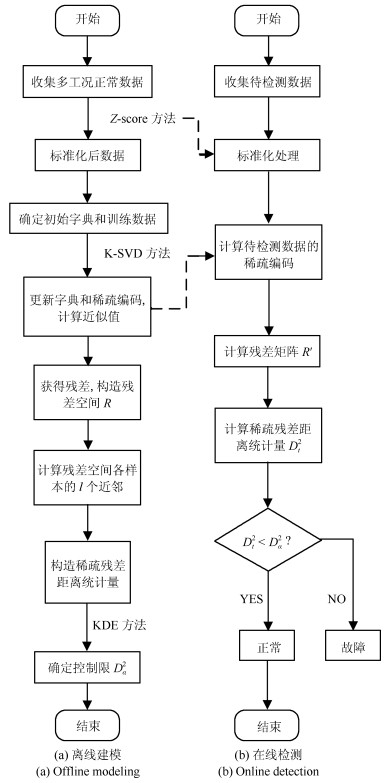
 下载:
下载:
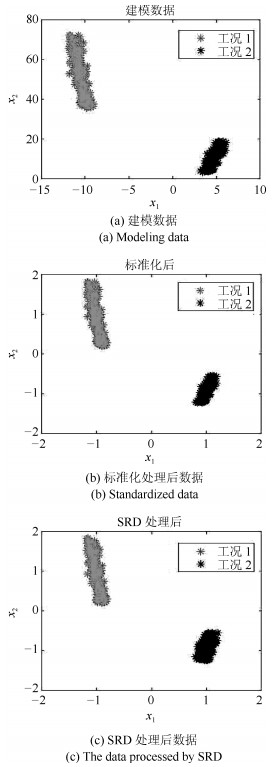
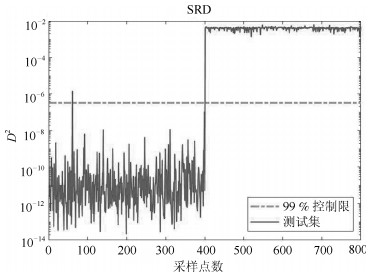

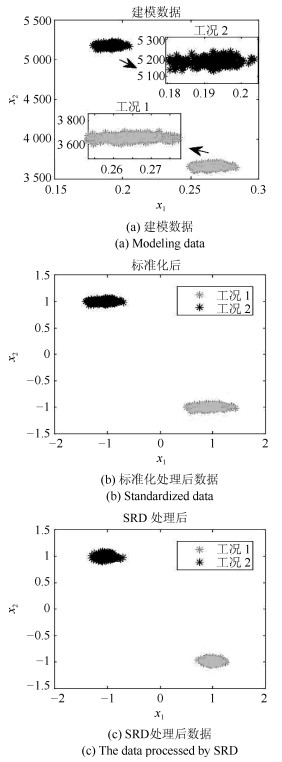
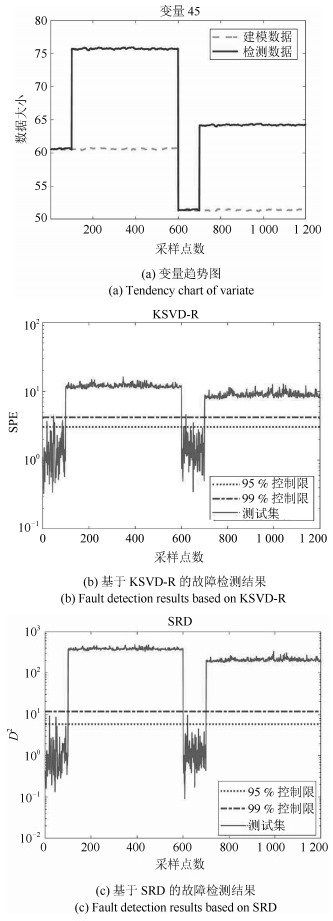
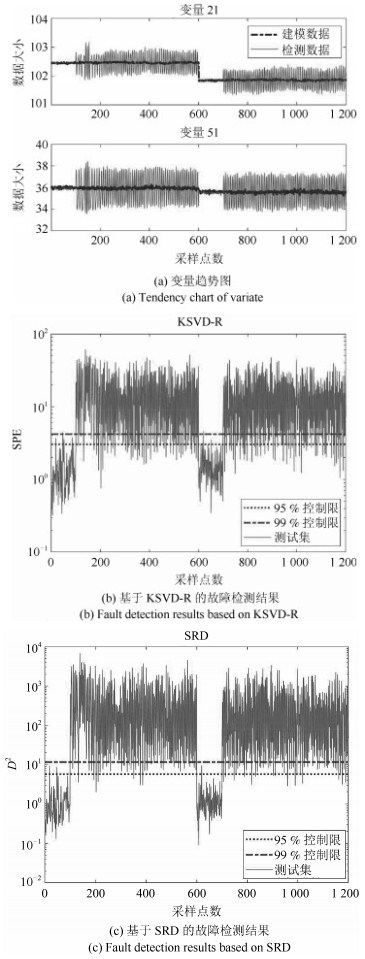
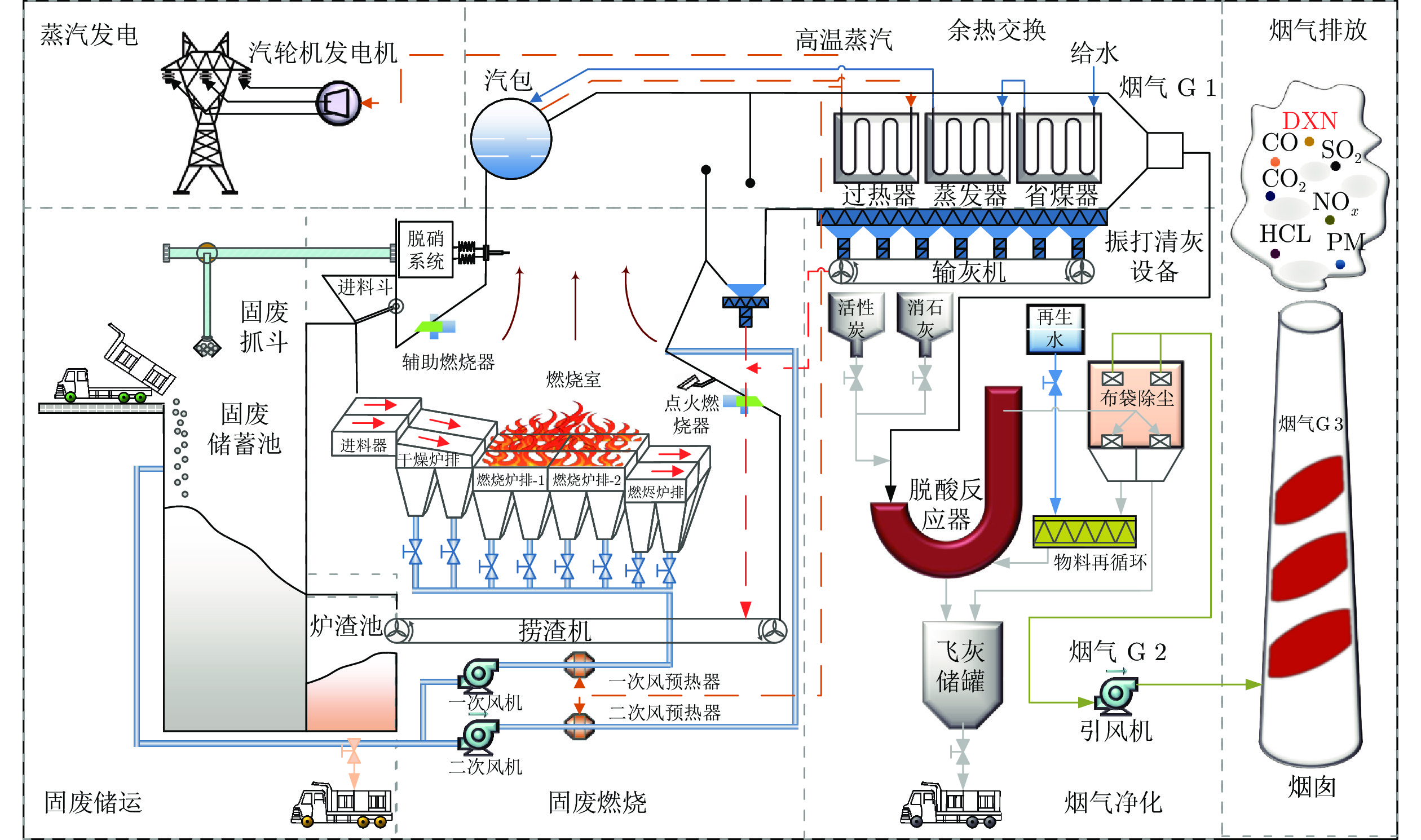
 下载:
下载:


